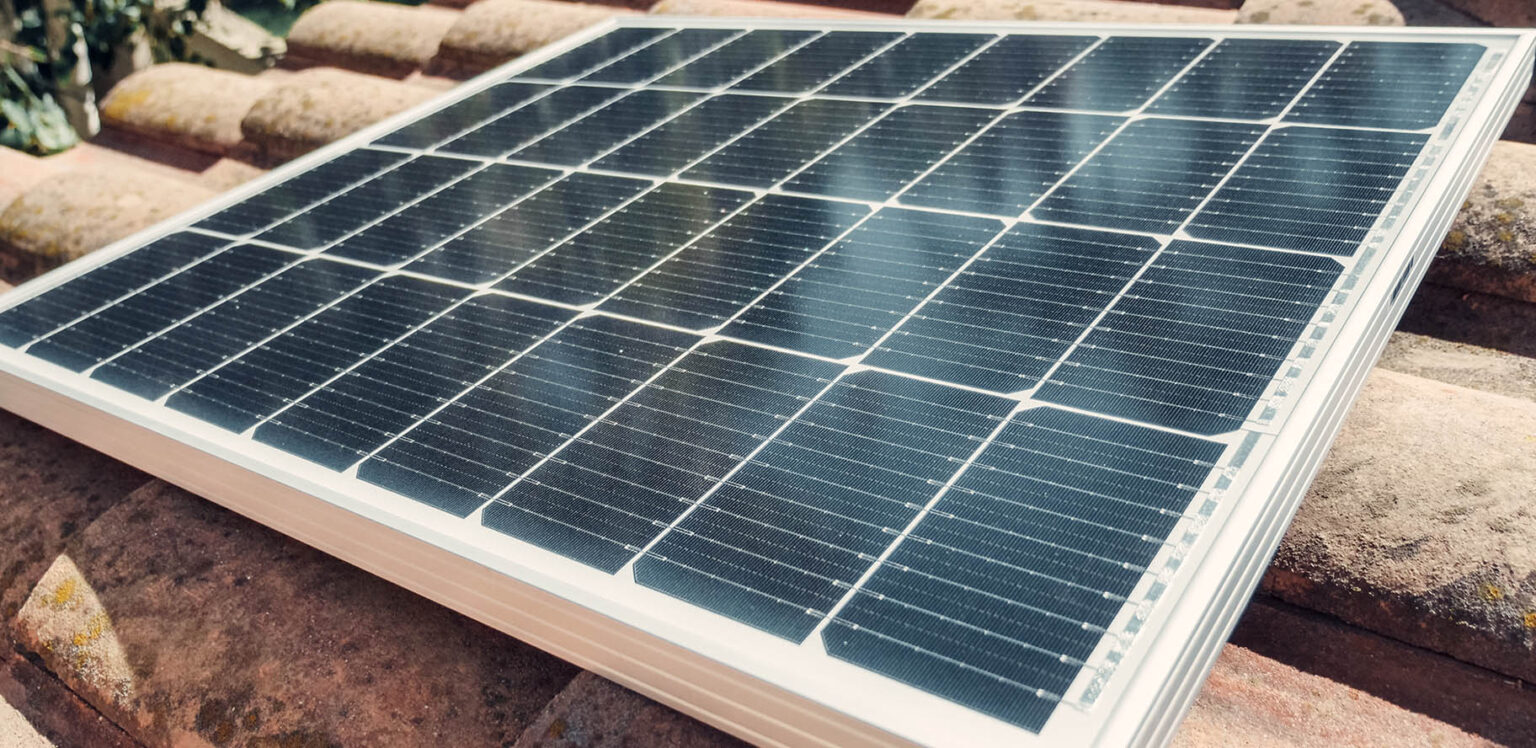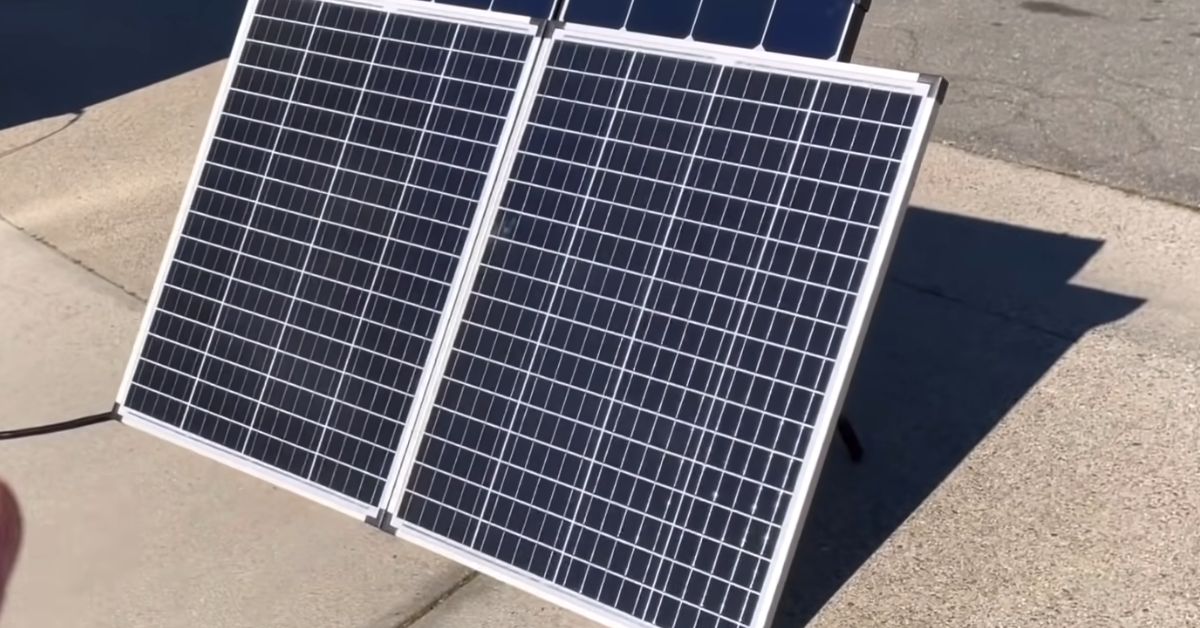Can you use Harbor Freight solar panels off grid? Yes, but there are some important considerations to keep in mind. In this article, we’ll discuss the compatibility, power output, installation, and cost of Harbor Freight solar panels for off-grid applications.
Harbor Freight solar panels are a budget-friendly option for those looking to power their off-grid systems. However, it’s important to note that they may not be as efficient or durable as more expensive brands.
Components and Compatibility: Can You Use Harbor Freight Solar Panels Off Grid

Harbor Freight offers a range of solar panels suitable for off-grid applications, including monocrystalline and polycrystalline panels.
Can you use Harbor Freight solar panels off grid? The answer is yes, but you need to be aware of the limitations. Harbor Freight solar panels are not as efficient as more expensive panels, so you will need to use more of them to generate the same amount of power.
Additionally, Harbor Freight solar panels are not as durable as more expensive panels, so they may not last as long. However, if you are on a budget, Harbor Freight solar panels can be a good option for off-grid use. For more information on solar panels, including Texas buyback programs, visit Solar Panels Texas Buyback: Powering the Lone Star State.
Harbor Freight solar panels can be a good option for off-grid use if you are on a budget.
Harbor Freight solar panels are compatible with various off-grid systems, including battery banks, charge controllers, and inverters. The specific compatibility depends on the voltage and power output of the solar panels and the requirements of the off-grid system.
Monocrystalline vs Polycrystalline Panels
- Monocrystalline panels are more efficient than polycrystalline panels, meaning they can generate more power from the same amount of sunlight.
- Polycrystalline panels are less expensive than monocrystalline panels.
Voltage and Power Output
The voltage and power output of solar panels are important factors to consider when designing an off-grid system.
The voltage of solar panels is typically 12 volts or 24 volts. The voltage of the solar panels must match the voltage of the battery bank.
The power output of solar panels is measured in watts. The power output of the solar panels must be sufficient to meet the power requirements of the off-grid system.
Power Output and Efficiency
Harbor Freight solar panels have varying power outputs and efficiencies depending on the model and size. Generally, they range from 5 watts to 100 watts, with efficiencies between 15% and 20%. While these values are comparable to other budget-friendly solar panels, they are lower than premium brands.
Comparison to Other Brands
When compared to top-tier solar panel brands like SunPower and LG, Harbor Freight panels have lower power output and efficiency. SunPower panels, for instance, offer power outputs up to 400 watts and efficiencies of up to 22.8%. LG panels also have higher power outputs and efficiencies, ranging up to 370 watts and 21.1%, respectively.
Installation Considerations
Installing Harbor Freight solar panels off-grid requires careful planning and execution. This section Artikels the steps involved, the necessary tools, and materials for a successful installation.
Steps Involved
- Site Selection: Determine the optimal location for the solar panels, considering factors like sunlight exposure, shading, and accessibility.
- Panel Mounting: Install the solar panels on a sturdy mounting system, such as a roof rack or ground mount, ensuring proper ventilation and stability.
- Electrical Wiring: Connect the solar panels to the charge controller and battery bank using appropriate wiring and connectors.
- Charge Controller Setup: Configure the charge controller to regulate the flow of electricity from the solar panels to the battery bank, preventing overcharging or undercharging.
- Battery Bank Installation: Install the battery bank in a well-ventilated area, connecting it to the charge controller and inverter.
- Inverter Installation: Install the inverter to convert DC power from the battery bank to AC power for appliances and devices.
- System Testing: Thoroughly test the system to ensure it is functioning correctly and generating electricity as expected.
Tools and Materials Required
- Solar panels
- Mounting system
- Charge controller
- Battery bank
- Inverter
- Wiring and connectors
- Tools: wrench, screwdriver, multimeter, wire strippers, crimping tool
- Materials: conduit, grounding wire, sealant
System Design and Sizing
Designing an off-grid solar system using Harbor Freight solar panels requires careful planning to ensure it meets your energy needs and operates efficiently.
To determine the size of your solar panel system, you need to first estimate your daily energy consumption in kilowatt-hours (kWh). This can be done by adding up the power consumption of all your appliances and devices and multiplying the total by the number of hours they are used each day.
System Sizing
- Estimate your daily energy consumption in kWh.
- Multiply your daily energy consumption by 1.25 to account for inefficiencies and system losses.
- Divide the result by the average peak sunlight hours in your area to get the size of your solar panel system in kilowatts (kW).
Cost and Value
Harbor Freight solar panels are generally more affordable than comparable panels from other brands. This is because Harbor Freight has a large volume of sales, which allows them to negotiate lower prices from manufacturers. Additionally, Harbor Freight often offers discounts and promotions on their solar panels, making them even more affordable.
The cost-effectiveness of using Harbor Freight solar panels for off-grid applications depends on a number of factors, including the size of the system, the amount of sunlight the system will receive, and the cost of electricity in the area. In general, solar panels are a cost-effective way to generate electricity off-grid, and Harbor Freight solar panels are a good option for those looking for an affordable way to go solar.
Return on Investment
The return on investment (ROI) for a solar panel system can be calculated by dividing the total cost of the system by the amount of electricity it is expected to generate over its lifetime. The ROI for a Harbor Freight solar panel system will vary depending on the factors mentioned above, but it is generally in the range of 5% to 10%. This means that it will take 10 to 20 years to recoup the cost of the system through savings on electricity bills.
Long-term Savings
In addition to the ROI, solar panels can also provide long-term savings by reducing or eliminating the need for grid electricity. This can be especially beneficial in areas with high electricity rates. Solar panels can also help to increase the value of a home, as they are seen as a desirable feature by many buyers.
Overall, Harbor Freight solar panels are a good option for those looking for an affordable way to go solar. They are less expensive than comparable panels from other brands, and they offer a good ROI. Solar panels can provide long-term savings by reducing or eliminating the need for grid electricity, and they can also help to increase the value of a home.
Durability and Warranty
Harbor Freight solar panels are designed to withstand harsh outdoor conditions, including extreme temperatures, rain, and snow. The panels are made with durable materials, such as tempered glass and anodized aluminum frames, which provide protection against the elements.
Harbor Freight offers a 25-year limited warranty on its solar panels. This warranty covers defects in materials and workmanship, and it guarantees that the panels will produce at least 80% of their original power output for 25 years.
Lifespan of Harbor Freight Solar Panels
The lifespan of Harbor Freight solar panels is typically 25 to 30 years. This is comparable to the lifespan of other major solar panel brands. However, the actual lifespan of your panels will depend on a number of factors, including the climate in which you live, the amount of sunlight your panels receive, and the quality of your installation.
Warranty Coverage, Can you use Harbor Freight solar panels off grid
The Harbor Freight 25-year limited warranty covers defects in materials and workmanship. This means that if your panels fail due to a manufacturing defect, Harbor Freight will repair or replace them for free. The warranty does not cover damage caused by improper installation, misuse, or neglect.
Environmental Impact
Using solar panels off-grid offers several environmental benefits. By harnessing the sun’s energy, solar panels reduce reliance on fossil fuels, which contributes to greenhouse gas emissions and air pollution. Additionally, solar energy is a renewable resource, meaning it will not deplete over time.
Specific Environmental Impact of Harbor Freight Solar Panels
Harbor Freight solar panels are manufactured using environmentally friendly materials and processes. The panels are made from lightweight aluminum frames and tempered glass, which are both recyclable. Additionally, Harbor Freight solar panels are designed to be durable and long-lasting, reducing the need for frequent replacements and disposal.
Examples and Case Studies

Harbor Freight solar panels have been successfully used in various off-grid applications, showcasing their practicality and effectiveness in providing sustainable energy solutions.
One notable example is the off-grid solar system installed by a homesteader in rural Maine. The system utilizes six Harbor Freight 100-watt solar panels, which generate a total of 600 watts of power. This power is stored in a battery bank and used to power essential appliances, lighting, and tools.
Case Study
In a case study conducted by a renewable energy research institute, Harbor Freight solar panels were tested for their performance and reliability in an off-grid setting. The panels were subjected to various environmental conditions, including extreme temperatures, humidity, and wind. The results showed that the panels maintained consistent power output and exhibited no significant degradation over an extended period.
Last Point

Overall, Harbor Freight solar panels can be a good option for those looking to build an off-grid solar system on a budget. However, it’s important to do your research and understand the limitations of these panels before making a purchase.
FAQ Overview
Can Harbor Freight solar panels be used off grid?
Yes, Harbor Freight solar panels can be used off grid. However, it’s important to note that they may not be as efficient or durable as more expensive brands.
What is the power output of Harbor Freight solar panels?
The power output of Harbor Freight solar panels ranges from 10 watts to 200 watts. The exact power output will depend on the size and type of solar panel.
How do I install Harbor Freight solar panels off grid?
Installing Harbor Freight solar panels off grid is a relatively straightforward process. However, it’s important to follow the manufacturer’s instructions carefully.
How much do Harbor Freight solar panels cost?
Harbor Freight solar panels are a budget-friendly option. The cost of a single panel ranges from $50 to $200.

